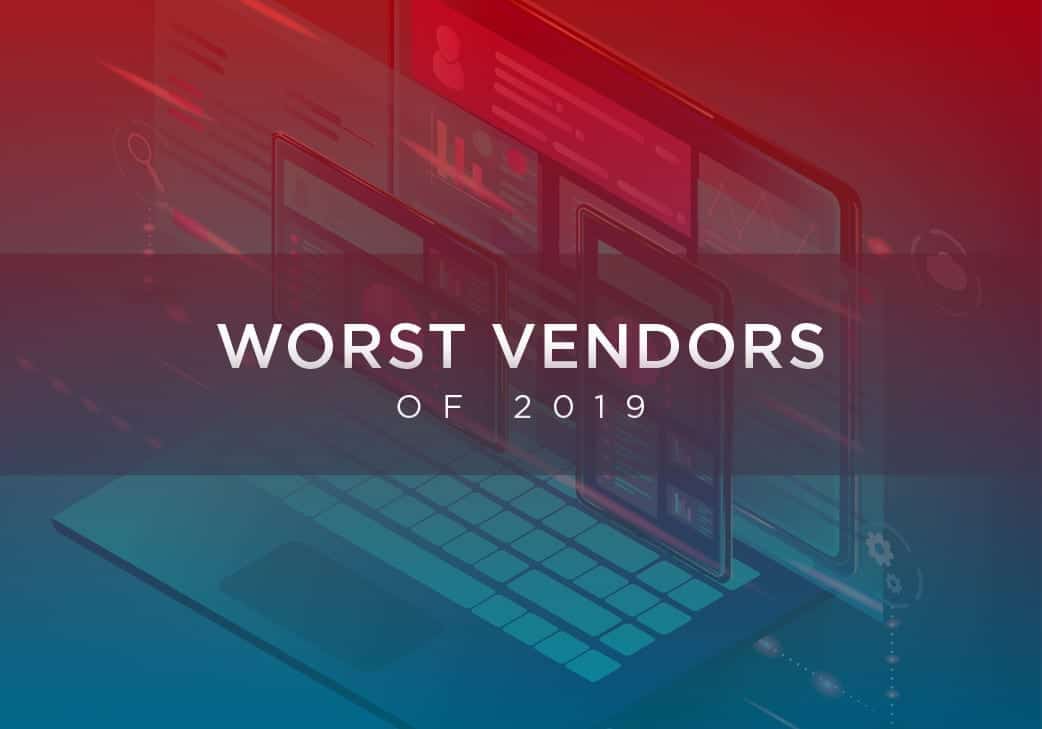
Who Are the Worst Vendors of 2019?
2019 has brought serious threats causing massive disruption and data theft. Which vendor has released the most software updates and fixes in 2019, and of these, which updates are the most critical? Let’s find out!
The top 20 vendors look like this for 2019—this means Microsoft has released the most patches to fix a vulnerability of any severity out of the most popular software vendors.Let’s see how the top 10 from this list compare when we deep dive into the severity of the vulnerabilities fixed. For simplicity, we will base our statistics on the CVSS Score.
What is a CVSS Score?
The Common Vulnerability Scoring System (CVSS) provides a way to capture the principal characteristics of a vulnerability and produce a numerical score reflecting its severity. The numerical score can then be translated into a qualitative representation (such as low, medium, high, and critical) to help properly assess and prioritize their vulnerability management processes.
We can see that Microsoft have released a total of 6330 patches so far this year, with 2143 of these patches resolving a vulnerability with a CVSS score of 9 or higher. Just behind Microsoft in second place is Adobe – which has released 2052 updates.
Let’s take a look at how the most serious vulnerabilities impact the original ranking. We can see from the table below that the top 5 vendors have made significant movements and some are unexpected, e.g. IBM has moved out of the top 5 and Adobe has moved into the top 5.
Who’s the worst?
To continue this trend analysis review and to find out who has fixed the highest number of critical vulnerabilities, let’s compare the percentage of those threats against the total number of patches they have released this year.
We can do this by dividing all vulnerabilities with CVSS score more than 9 and dividing by the total number released by 100. The following table shows the new ranking of the vendors against the original ranking.
Robert Brown, Director of Services said, “What is really surprising is that a third party vendor to Microsoft has fixed more high priority vulnerabilities than them. If you do not have a strategy to include third party updates believing that only Microsoft needs to be patched, I hope this table convinces you to implement a different, more inclusive process. Not only that, some of these third party vendors like Oracle and Cisco are less likely to appear in a patching strategy which would expose a lot of your estate. Lastly, the toolset you use to patch your environment should be flexible to include other non-Windows operating systems like RedHat and Suse.”




